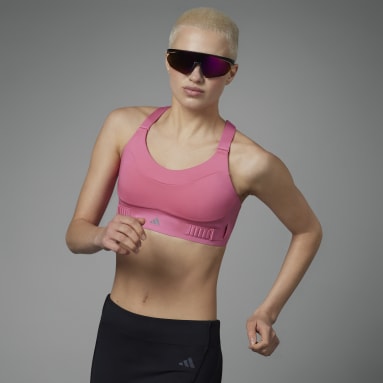Running Bras
[4]Women’s running sports bras balance support and mobility, so you can stay dialed-in without being held back. Made for high-impact training, they give you the confidence to push your boundaries.
Our clothing and shoe categories
- Womens
- Womens Shoes
- Womens Clothing
- Womens Pants
- Womens Jackets
- Womens Shirts
- Womens Hoodies
- Womens Tracksuits
- Womens Shorts
- Womens Tights
- Womens Polo Shirts
- Womens Sports Bras
- Womens Skirts
- Womens Bags
- Womens Sweatpants
- Womens Headwear
- Womens Slides
- Outlet
Sports Bras
It’s important to find the right sports bra for you. It needs to fit your shape. Move with your body. Support you in the best way possible. And the support level you need depends on the type of workout you’re doing. Take a look below to find out what different sports bras do.
Light support bras, like the All Me bra, are great for for lower impact workouts, such as yoga, Pilates and barre.
Medium support bras, like the Don’t Rest bra, are great for more intense workouts, such as cycling, boxing and gym training.
High support bras, like the Stronger For It bra, are great for high impact workouts, such as running, cross-training and football.
Another sports bra feature to keep in mind is how the back is cut.
Racer back sports bras have shoulder straps that create a Y-shape at the back. They provide good support for medium to high-impact activities, but are typically not adjustable, so it’s important to size the bra correctly.
Criss-cross sports bras give a good level of support and often have adjustable straps.
Strappy sports bras are similar to tank tops and are comfortable to wear during low impact activities.



